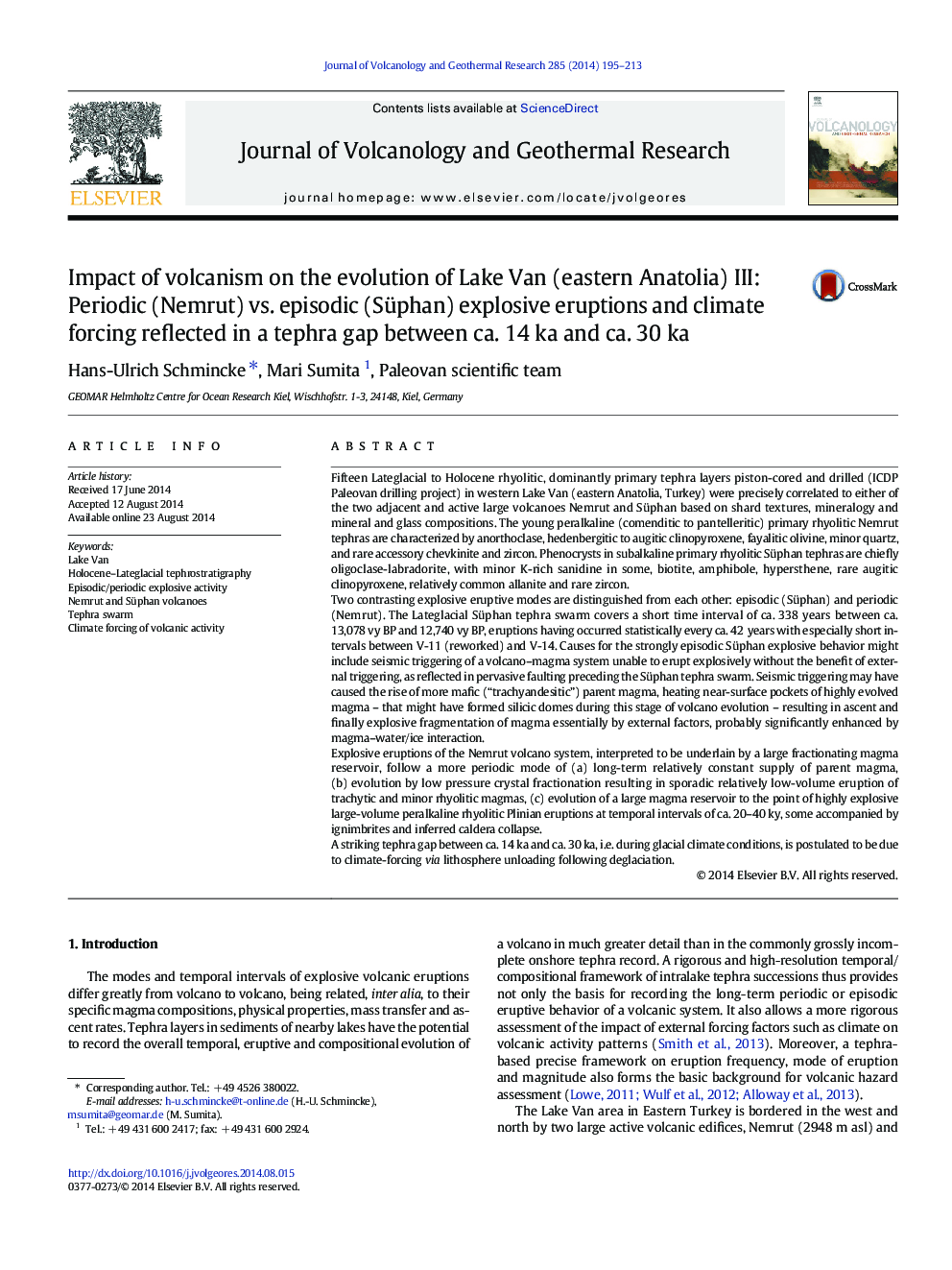| Article ID | Journal | Published Year | Pages | File Type |
|---|---|---|---|---|
| 4713064 | Journal of Volcanology and Geothermal Research | 2014 | 19 Pages |
•Lateglacial to Holocene tephra layers cored in Lake Van are correlated compositionally to either Nemrut and Süphan volcanoes.•The Süphan tephras represent an episodic explosive burst following a pause in explosive activity over the past ca. 150 ka.•The sudden explosive activity of Süphan may have been due to rise of mafic parent magma triggered by seismic activity.•Nemrut Volcano is characterized by periodic explosive eruptions, major rhyolitic tephras being spaced every 20–40 ky apart.•A long tephra gap between ca. 28 ka and ca. 13 ka is explained by climate forcing during the last glacial maximum.
Fifteen Lateglacial to Holocene rhyolitic, dominantly primary tephra layers piston-cored and drilled (ICDP Paleovan drilling project) in western Lake Van (eastern Anatolia, Turkey) were precisely correlated to either of the two adjacent and active large volcanoes Nemrut and Süphan based on shard textures, mineralogy and mineral and glass compositions. The young peralkaline (comenditic to pantelleritic) primary rhyolitic Nemrut tephras are characterized by anorthoclase, hedenbergitic to augitic clinopyroxene, fayalitic olivine, minor quartz, and rare accessory chevkinite and zircon. Phenocrysts in subalkaline primary rhyolitic Süphan tephras are chiefly oligoclase-labradorite, with minor K-rich sanidine in some, biotite, amphibole, hypersthene, rare augitic clinopyroxene, relatively common allanite and rare zircon.Two contrasting explosive eruptive modes are distinguished from each other: episodic (Süphan) and periodic (Nemrut). The Lateglacial Süphan tephra swarm covers a short time interval of ca. 338 years between ca. 13,078 vy BP and 12,740 vy BP, eruptions having occurred statistically every ca. 42 years with especially short intervals between V-11 (reworked) and V-14. Causes for the strongly episodic Süphan explosive behavior might include seismic triggering of a volcano–magma system unable to erupt explosively without the benefit of external triggering, as reflected in pervasive faulting preceding the Süphan tephra swarm. Seismic triggering may have caused the rise of more mafic (“trachyandesitic”) parent magma, heating near-surface pockets of highly evolved magma – that might have formed silicic domes during this stage of volcano evolution – resulting in ascent and finally explosive fragmentation of magma essentially by external factors, probably significantly enhanced by magma–water/ice interaction.Explosive eruptions of the Nemrut volcano system, interpreted to be underlain by a large fractionating magma reservoir, follow a more periodic mode of (a) long-term relatively constant supply of parent magma, (b) evolution by low pressure crystal fractionation resulting in sporadic relatively low-volume eruption of trachytic and minor rhyolitic magmas, (c) evolution of a large magma reservoir to the point of highly explosive large-volume peralkaline rhyolitic Plinian eruptions at temporal intervals of ca. 20–40 ky, some accompanied by ignimbrites and inferred caldera collapse.A striking tephra gap between ca. 14 ka and ca. 30 ka, i.e. during glacial climate conditions, is postulated to be due to climate-forcing via lithosphere unloading following deglaciation.
